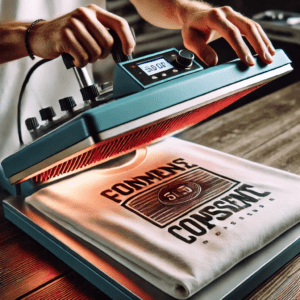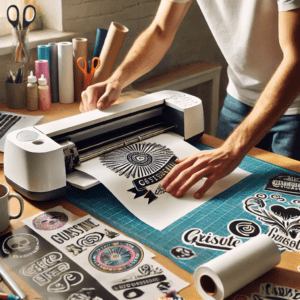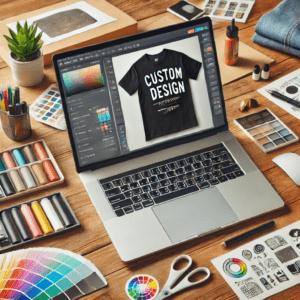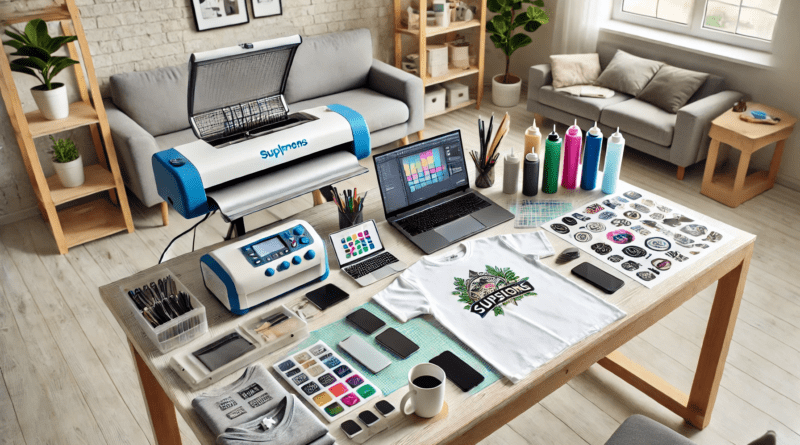How to Start a Printing Business from Home in 2025 under 1000$
Introduction
Running home-based businesses for personalized printing, therefore, is an exciting idea to make a biz out of creativity. Be it custom t-shirt or mug or custom phone case, the right equipment plays a crucial role in the success of your business. In this blog, we elucidate the five major tools required to start your business to build up for less than $1,000. So let’s get started!
Heat Press Machine: The Heart of Your Operation

Your heat press machine is the backbone of your printing business. It transfers designs onto fabrics, mugs, phone cases, and more. You don’t need a fancy industrial model to start—a basic 5-in-1 heat press works perfectly.
Key Features to Look For:
- Adjustable Temperature & Timer: Ensures consistent results across materials.
- A platen size of 12×15 or 15×15 is considered ideal for beginners.Versatility: Look for machines that handle flat and curved surfaces (e.g., mugs, caps).
Sublimation Printer: Your Design Transfer Partner

Not just any printer will work. You need one compatible with sublimation ink or transfer paper. The Epson EcoTank series (like the EcoTank F170) is a budget-friendly option (150–150–250).
Why Sublimation?
- It bonds designs permanently to polyester fabrics or coated surfaces.
- Sublimation ink (20–20–25 per bottle) is cost-effective for small batches.
Important: Replace the default ink with sublimation ink immediately. Regular ink won’t work for this process!
- Cutting Machine: Your Digital Scissors

A cutting machine is your best friend for creating crisp, professional designs. Think of it as a digital pair of scissors that cuts vinyl, sublimation paper, and heat-transfer vinyl (HTV).
Top Picks for Beginners:
- Cricut Maker 3 (400–400–500): Handles intricate designs, engraving, and large formats.
- Cricut Explore 3 (300–300–350): Affordable and user-friendly for basic projects.
I use the Cricut Maker 3 because it’s versatile—it engraves wood, glass, and acrylic. If you’re on a tight budget, start with the Explore series.
Pro Tip: Buy a machine that matches your project sizes. Larger designs need wider cutting mats!
- Design Software: Your Creative Playground

You can’t create stunning products without design software. In terms of starting out with its sleep aid, Canva can be a breath-saver technically. Free, easy to use, and an overwhelming, continuously refreshed clap full of templates for t-shirts, mugs, whatever you want, you name it!
Other Options:
- Inkscape (free): Great for vector designs.
- Adobe Illustrator (paid): Advanced tools for complex projects.
- Supplies: Your Raw Materials
No printing business runs without blanks and transfer materials. Start small with samples to test quality before bulk-buying.
Essential Supplies:
- Everything: T-shirts (100% cotton or polyester), mugs, phone cases, and tote bags.
- In-between Material: Sublimation paper, heat-transfer vinyl (HTV), adhesive vinyl.
Where to Buy:
- Amazon: Quick delivery for small orders (e.g., mugs, mouse pads).
- Wholesalers: Save money by purchasing bulk blanks from suppliers (I’ll share my list in the ebook!).
Pro Tip: Experiment with fabric blends. A 80% cotton/20% polyester shirt works better with sublimation than 100% cotton.
Putting It All Together
Here’s a cost breakdown to stay under $1,000:
- Heat Press: 200–200–300
- Sublimation Printer: 150–150–250
- Cutting Machine: 200–200–500
- Design Software: Free (Canva) or 10–10–20/month (Adobe).
- Supplies: 100–100–150 (start with samples).
Total: 700–700–1,200 (depending on equipment choices).
Next Steps for Your Printing Business
Alright, so you’ve got all your tools lined up—your heat press, printer, cutting machine, and everything else. Now what? Let me walk you through exactly what I did when I started, step by step.
First off, don’t be afraid to make mistakes. Seriously! When I first got my heat press, I burned a few shirts because I didn’t get the temperature right. But guess what? That’s how I learned. Grab some old t-shirts or cheap mugs from the dollar store and just practice. Press designs, test different temperatures, and see how the vinyl or sublimation paper reacts. You’ll figure out what works best for you.
Next, start sourcing your blanks. I know it’s tempting to buy 100 mugs or 50 t-shirts right away, but hold on. Order a few samples first—like 2-3 shirts in different fabrics (cotton, polyester blends) or a couple of ceramic mugs. Feel the material, test how your designs stick, and see which ones your hands-on vibe. Once you’re confident, then hit up suppliers for bulk discounts.
Now, let’s talk about design software. I remember staring at Canva for hours when I started, thinking, “How do I even make a simple logo?” But here’s the secret: start with templates. Pick a mug template, swap out the text, add a fun graphic, and play with colors. Save your drafts, even the ugly ones—you’ll laugh at them later, trust me. And if you get stuck, YouTube tutorials are your best friend.
Build your portfolio slowly. When I made my first decent shirt, I took 20 photos of it in different lighting until one looked good. Share those pics everywhere: Instagram, Facebook groups, even your personal WhatsApp status. People love seeing the process—like a plain shirt turning into something custom. Before you know it, friends will ask, “Hey, can you make one for me?”
Oh, and connect with other small biz folks. Join Facebook groups like “DIY Printers United” or Reddit’s r/PrintingBiz. I’ve gotten so many tips from there—like how to fix wrinkled vinyl or where to find cheap blanks. Don’t be shy to ask questions. Most people are happy to help!
Finally, keep learning. The printing world changes fast. One month, glitter vinyl is trending; the next, everyone wants holographic designs. Follow a few printing accounts on Instagram, watch YouTube shorts for quick hacks, and maybe even take a cheap Udemy course if you’re stuck.
Remember, I started exactly where you are now—with a basic heat press and a lot of doubts. But once you get that first order, it’s all worth it. You’ve got this! 💪
Final Thoughts
A printing business can be started easily and smoothly, provided the entrepreneur has suitable tools and an enterprising mindset. Learn the functionalities of your equipment; create brilliant designs, and grow a loyal clientele. Do not forget to visit to my my website for more tips.
Happy printing! 🖨️

